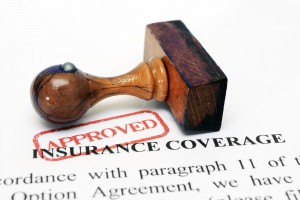 When Donna Childs’ New York-based financial services firm was shut down for a week after the September 11 terrorist attacks, all day-to-day operations – and revenue – ceased. Luckily, she had business interruption insurance, which covers lost business income due to a disaster.
When Donna Childs’ New York-based financial services firm was shut down for a week after the September 11 terrorist attacks, all day-to-day operations – and revenue – ceased. Luckily, she had business interruption insurance, which covers lost business income due to a disaster.
But some of her fellow business owners weren’t so lucky. Many didn’t have enough insurance to make it through the tough times following the event. “I saw businesses fail around me and I thought, ‘if they only knew what I knew,'” she recalls. Childs shared her experiences through the book “Prepare for the Worst, Plan for the Best: Disaster Preparedness and Recovery for Small Businesses.”
Here are four things you can learn from her about finding the right insurance for your business needs.
1. Determine your critical assets.
If your business experienced a major disaster, what couldn’t you afford to lose? If your office space is critical, make sure you have enough property insurance to rebuild if necessary. Also, ensure you have enough business interruption insurance to provide income while you wait for those repairs to be completed. If your firm is more dependent upon intellectual capital because you have employees who provide consulting services from home, you may need an errors and omissions policy, which protects you from lawsuits arising from bad business advice. The type of insurance you buy will be driven by your business’s greatest priorities.
2. Know your business’s value.
Insurance is designed to replace property and income that is lost in a disaster. That means you will have to know – and prove to the insurance company – what your business is worth. “The insurance company isn’t going to believe your hockey stick projection that if this disaster hadn’t happened, you would’ve earned a billion dollars,” Childs says. You’ll need to have records showing the value of your property, as well as business tax returns to come up with an estimate of how much you would’ve earned had the disaster not occurred. This information also is crucial to determining how much insurance coverage you need to have in the first place.
3. Don’t underestimate the replacement cost of your assets.
If all of your business furniture and equipment had to be replaced, how much would it cost? “Don’t look at your credit card statement to see what you paid 10 years ago. Go out and check the store prices and online retailers to see what it would cost if you had to replace it today,” Childs says. Make sure your insurance coverage keeps up with inflation and will cover all lost business property.
4. Let your business insurance grow with your business.
The business insurance policy you had five years ago may not be sufficient today if your business has grown. “A lot of businesses had appropriate insurance when they first took out the policy but 10 years later the coverage has not kept pace with the growth of the business,” Childs says. Review your business insurance policy each year to consider what’s changed and whether you need to add more insurance coverage to protect a more profitable – and valuable – enterprise.
Laura Adams is senior insurance analyst for Car Insurance Quotes, a leading online provider of car insurance news.
Image Credit: Shutterstock.com



